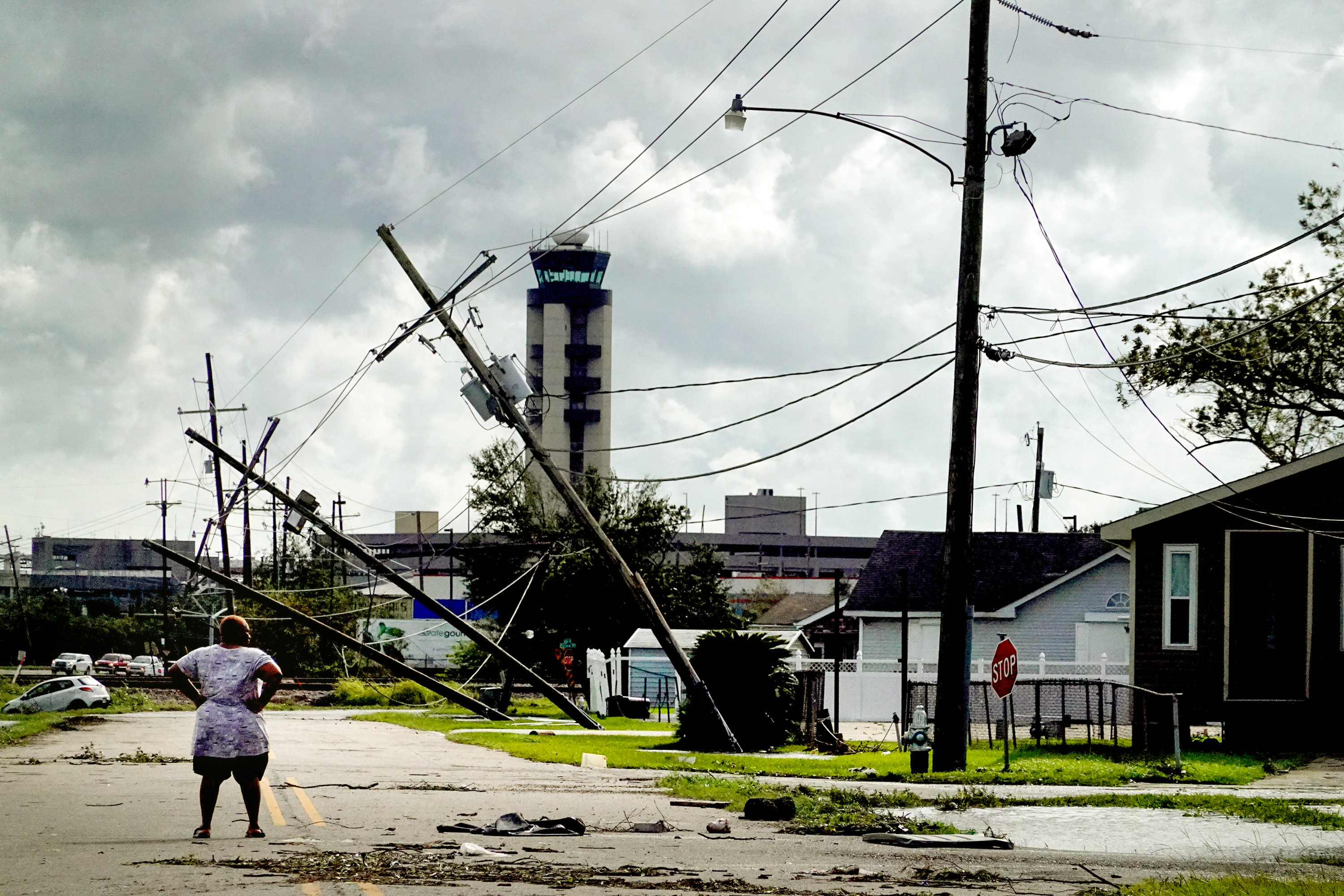How to keep the power on during hurricanes and heat waves and fires and …
Hurricane Ida offers the latest reminder that we need to rapidly rebuild our systems to withstand increasingly extreme events.

Global warming is underscoring the point, again and again and again, that the infrastructure in the US was built for the climate conditions of the past.
Hurricane Ida, turbocharged by unusually warm waters in the Gulf of Mexico, plunged New Orleans into darkness after reportedly knocking out all eight of the transmission lines into the city.
That and other damage to the power system left more than a million customers without electricity across the broader region, which is grappling with the aftermath of the storm and oppressively hot temperatures. The main utility, Entergy New Orleans, has said it could take weeks to fully restore service.
Ida follows the record-setting heat waves in the Pacific Northwest in June, during which soaring electricity demands knocked out power in some areas and forced utilities to institute rolling outages to prevent worse problems. That, in turn, closely followed outages in Texas that left four million without electricity for days in February, as frigid temperatures created a surge in demand and froze natural-gas wells and gathering lines.
Finally, in California, utilities have taken to shutting off electricity lines when high winds and fire risks pick up, in the hope of preventing a downed line from sparking another deadly inferno like the Camp Fire that nearly destroyed the town of Paradise.
Each of these disasters, exacerbated or made more likely by climate change, undermined our electricity systems in different ways: creating demand spikes, knocking power plants offline, and taking out transmission lines.
Every issue requires different, expensive solutions. But they all point to the same problem: the need to build a modernized, robust, interconnected power generation and delivery system, capable of keeping the lights on in the face of increasingly common and severe extreme weather events.
Losing power during heat waves, winter storms, floods, and fires isn’t just an inconvenience. It’s very often a matter of life and death.
We need to weatherize power plants to keep them operating safely under both scorching and freezing conditions. We need to update grids with sensors and software that help operators foresee and avoid problems.
We need to develop a more diverse array of electricity sources, as well as far more energy storage, to ensure that there’s enough power to keep homes and businesses online whatever the weather conditions. And we need to tie together our creaking, fragmented systems in order to create greater redundancy across our power plants and the towers and lines that deliver electricity wherever it needs to go.
On top of all that, the US may need to build more microgrids to provide electricity locally in the face of disasters, downed lines, or larger outages. It may also be necessary to bury more of our power lines to ensure that they don’t spark fires or fall down during severe storms.
The good news is that the $1 trillion infrastructure package moving forward in the US Congress includes money and policies that could spur development of a modern, interwoven grid. In addition, utilities in states like California and other regions are taking steps to bury lines, build more generation, add more storage, and otherwise bolster their grids.
The bad news is that even if it passes, meaningfully improving the resilience of our grids will still require a huge amount of private investment, a long list of public approvals, and plenty of time. And even those plans won’t be nearly enough to stay ahead of the increasing strains that climate change will place on our electricity systems in the coming decades, and the dangers they’ll pose to people.
Deep Dive
Climate change and energy
What’s coming next for fusion research
A year ago, scientists generated net energy with a fusion reactor. This is what’s happened since then.
Is this the most energy-efficient way to build homes?
Airtight and super-insulated, a passive house uses around 90% less energy.
The University of California has all but dropped carbon offsets—and thinks you should, too
It uncovered systemic problems with offset markets and recommended that the public university system focus on cutting its direct emissions instead.
Super-efficient solar cells: 10 Breakthrough Technologies 2024
Solar cells that combine traditional silicon with cutting-edge perovskites could push the efficiency of solar panels to new heights.
Stay connected
Get the latest updates from
MIT Technology Review
Discover special offers, top stories, upcoming events, and more.